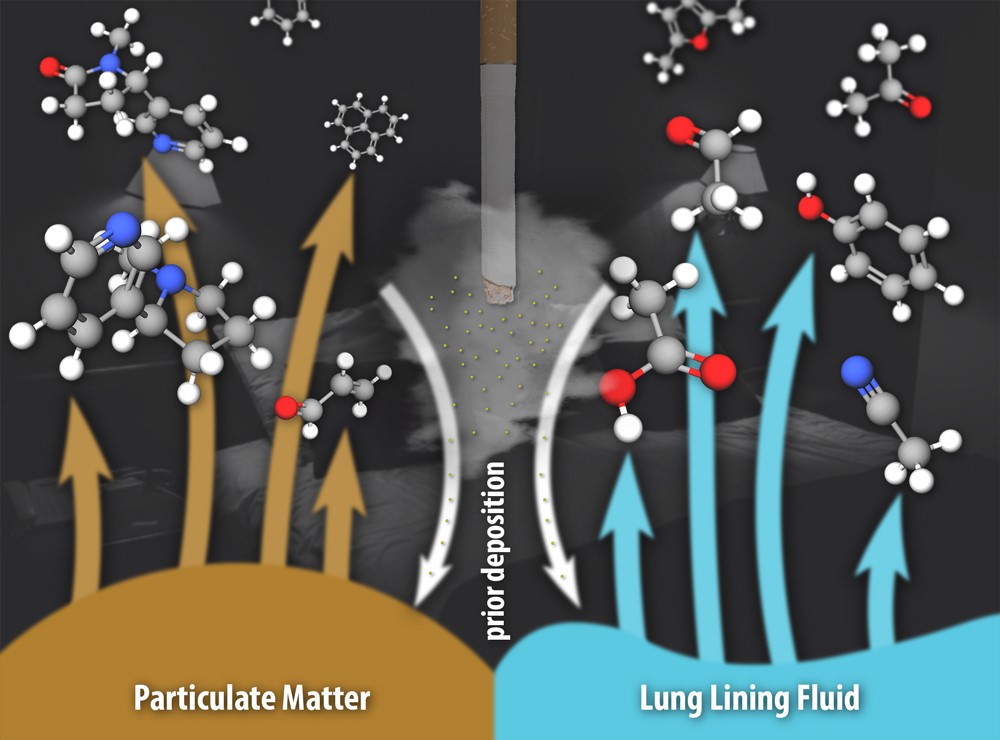
A closer look at third-hand smoke and its risks
Using state-of-the-art techniques, researchers have gained a better understanding of the complex mix of hazardous chemicals in third-hand smoke—the residual contamination from cigarette smoking—which can linger long after smoking has occurred and pose health risks to non-smokers.
Using high-resolution mass spectrometry instruments, studied the third-hand smoke emissions off-gassing from smoke particles of a wide range of toxic or carcinogenic compounds derived from tobacco smoke, even over long periods of time after smoking have occurred that have deposited on surfaces and from human lung fluid that has been exposed to fresh tobacco smoke.
The results show how deposited particulate matter and lung lining fluid can act as vehicles for these pollutants, but their emissions vary in composition and behaviour. Once deposited on clothes, furnishings, bodies, or in airways, particulate matter can release a wide range of volatile to semi-volatile gases that are persistent over long lifetimes.
The understanding of third-hand smoke's health risks has been growing with the understanding of its chemical composition, behaviour, and exposure routes, which can occur in places where smoking has occurred or be transported into other non-smoking environments.
 English
English Arabic
Arabic


